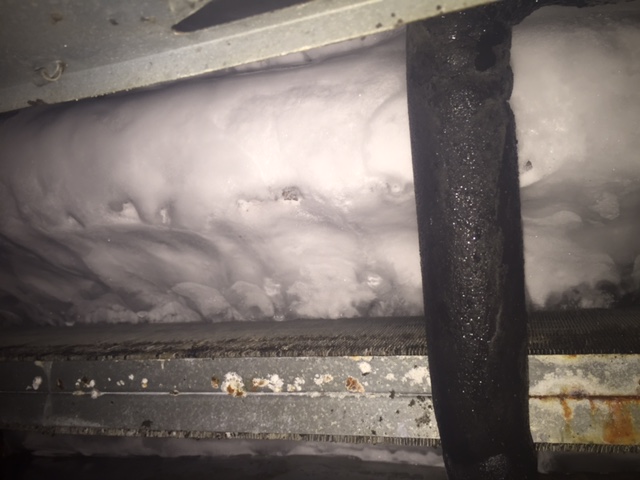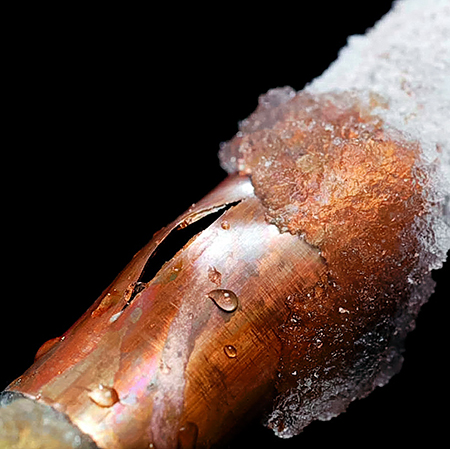Handling a Frozen AC Pipe: Proven Strategies
Handling a Frozen AC Pipe: Proven Strategies
Blog Article
We have unearthed this post pertaining to Why Is Ice On My Outside Air Conditione directly below on the web and believe it made good sense to share it with you on this page.

Introduction
Discovering that your AC pipeline is frozen can be concerning, especially throughout hot summer season when you depend on your a/c unit one of the most. Understanding what to do in such a circumstance is crucial to avoid more damages to your cooling system and ensure your comfort inside your home.
Recognizing the Causes
Numerous factors can contribute to the freezing of an a/c pipeline. Comprehending these reasons can assist you attend to the problem successfully.
Absence of Airflow
One typical root cause of an icy a/c pipeline is inadequate air movement. When the air movement over the evaporator coil is restricted, it can trigger the coil to go down below freezing temperature level, leading to ice formation on the pipeline.
Reduced Refrigerant Levels
Not enough cooling agent degrees in your AC system can also result in a frozen pipe. Low cooling agent degrees can create the stress in the system to drop, resulting in the cold of moisture on the evaporator coil.
Winter Conditions
In chillier environments, freezing temperature levels outside can contribute to the freezing of air conditioning pipelines. If your AC unit is not properly insulated or if there are leakages in the ductwork, cool air can penetrate the system, causing the pipe to freeze.
Dirty Air Filters
Dirty or clogged air filters can limit air movement in your air conditioner system, bring about numerous problems, consisting of a frozen pipeline. It's vital to change or clean your air filters frequently to guarantee proper air movement and avoid ice buildup.
Indicators of a Frozen Air Conditioning Pipe
Recognizing the indicators of an icy air conditioner pipe is crucial for punctual action.
Minimized Airflow
If you notice a substantial decrease in air movement from your vents, it might suggest a frozen pipe.
Ice Buildup on the Pipe
Noticeable ice buildup on the refrigerant line or the evaporator coil is a clear sign of a frozen air conditioning pipeline.
Strange Sounds from the Unit
Unusual noises, such as hissing or gurgling, originating from your AC system can indicate that there's ice existing on the pipeline.
Immediate Actions to Take
When faced with a frozen a/c pipeline, it's vital to act promptly to prevent further damage to your air conditioning system.
Switching off the air conditioner
The very first step is to switch off your a/c unit to avoid the system from running and intensifying the issue.
Checking for Blockages
Check the area around the interior system for any type of blockages that may be blocking air flow, such as furnishings or drapes.
Defrosting the Pipe
You can use mild approaches like putting towels soaked in warm water around the icy pipe to help thaw it slowly.
Safety nets
Taking safety nets can help stay clear of future incidents of an icy a/c pipe.
When DIY Methods Fail
If your efforts to thaw the pipe or address other concerns are unsuccessful, it's time to call in an expert.
Importance of Hiring a Professional HVAC Technician
A licensed HVAC professional has the know-how and devices required to identify and fix concerns with your AC system safely and effectively.
Routine Maintenance Checks
Schedule normal maintenance consult a specialist HVAC service technician to ensure that your a/c system is running efficiently.
Altering Air Filters
Routinely change or cleanse your air filters to avoid air movement restrictions and preserve optimum efficiency.
Insulating Exposed Pipes
If your a/c pipelines are exposed to cold temperature levels, take into consideration protecting them to prevent cold throughout winter season.
Seeking Professional Help
If DIY techniques fail to settle the problem or if you're unsure concerning exactly how to continue, it's finest to look for help from a qualified HVAC service technician.
Conclusion
Managing a frozen a/c pipeline can be a frustrating experience, yet recognizing how to react can help minimize damages and bring back comfort to your home. By understanding the causes, recognizing the indicators, and taking punctual activity, you can effectively address the issue and avoid future incidents.
What to Do If Your AC Line Is Frozen
Make Sure All Supply and Return Air Vents Are Open
If you notice problems with airflow, the first thing you should do is check your supply and return vents. Supply vents distribute clean, conditioned air throughout your home. As this air becomes stale, it’s pulled into the return vent, where it’s reconditioned before being sent back out through the supply vent.
When these vents are closed, air won’t flow in the home. Before examining your AC, check the vents in every room and ensure they’re all open.
Check for a Dirty Air Filter
Another possible cause of limited airflow is a dirty air filter. Your air conditioner’s filters catch elements you don’t want to breathe in, such as dirt and dust. Over time, filters can become clogged, ultimately blocking air from flowing in and out. The lack of airflow can then cause the entire coil to freeze and will completely restrict any air from moving through it. The AC may need to be powered off for one to two days to allow the coil to thaw after replacing the filter to allow proper functioning of the unit. This debris can also accumulate on your AC’s evaporator coil, requiring a more serious repair. In general, air filters should be cleaned regularly (about every two weeks).
Assess Your Outdoor Unit
In addition to checking your AC, assessing the outdoor unit is a good idea. Also known as the condensing unit, it works with your interior unit to release heat outside. An issue with the outdoor unit can result in rising internal temperatures.
Overgrown Shrubs or Clogged Leaves
From leaves and twigs to shrubs and debris, there’s no shortage of outdoor elements that can accumulate around your condensing unit. When these elements get lodged inside the unit, they can block airflow. Fortunately, removing the blockage can solve the problem.
Sounds of a Broken Fan
Shrubs and leaves aren’t the only things that can impede your outdoor unit’s airflow. If the fan is broken, the unit won’t be able to properly get rid of heat — which means the internal temperature won’t go down. First, make sure the fan is spinning. If it is, check for the following sounds of a broken fan:
Buzzing Rattling Screeching Hissing Clicking Preventative Measures
Nobody wants to deal with a frozen AC line. In addition to causing problems with your air conditioner, they require professional repairs. On the bright side, there are preventative measures you can take to help ensure this issue doesn’t arise in the first place.
https://www.coopergreenteam.com/blog/what-to-do-if-ac-line-frozen

Do you appreciate reading about Why Is Ice On My Outside Air Conditione? Make feedback directly below. We'd be glad to see your suggestions about this article. Hoping to see you back again soon. Feel free to take the time to promote this article if you enjoyed it. Thanks a lot for going through it.
Call Today Report this page